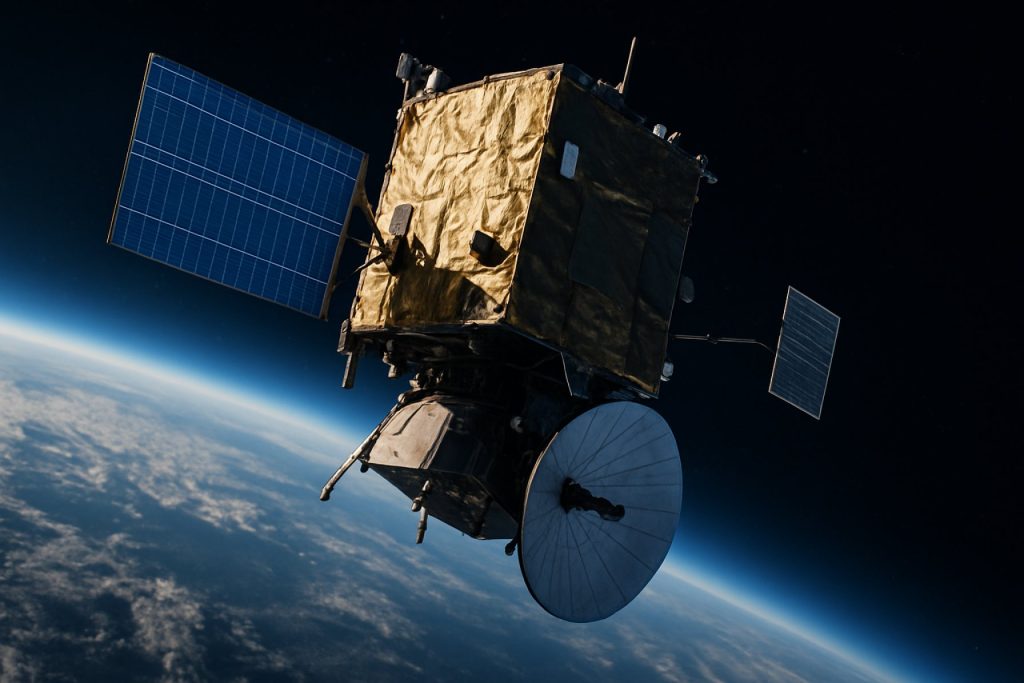
America Just Supercharged Its Space Force: Inside BAE’s $1.2B Missile-Tracking Satellite Win and What’s Next for National Security
BAE Systems lands a $1.2B contract to boost U.S. Space Force with 10 advanced missile-tracking satellites, shaping the future of space defense.
- Contract Value: $1.2 Billion
- Satellites to be Delivered: 10 Advanced Missile Trackers
- Delivery Timeline: 4 Years for Spacecraft, Plus 5 Years Operations Support
- Mission: Detect Ballistic & Hypersonic Missile Threats from Space
BAE Systems just clinched a monumental victory in the race to secure U.S. space defense, landing a $1.2 billion deal with the U.S. Space Systems Command. The prize? Building and operating a cutting-edge fleet of ten missile-tracking satellites that will transform missile warning and defense.
This isn’t just another contract—it’s a blueprint for the next generation of satellite defense. As America faces rising threats from advanced ballistic missiles and hypersonic weapons, these new spacecraft aim to become the eyes and ears of the U.S. Space Force in the ever-evolving domain of modern warfare.
What Does the BAE Systems Contract Cover?
The deal makes BAE Systems the prime contractor for the Resilient Missile Warning & Tracking (RMWT) Medium Earth Orbit (MEO) Epoch 2 program. Here’s what’s on the table:
– 10 advanced satellites equipped with next-gen electro-optical/infrared sensors and secure communications payloads.
– A ground system to manage the constellation—including mission command, control, and operations.
– Integration of the company’s Trek bus, part of the advanced Elevation spacecraft product line, offering powerful data links and enhanced agility.
– Four years for satellite construction, then five more years dedicated to operational management and support.
Why Are These Satellites a Game-Changer?
The upgraded satellites don’t just spot threats—they process and deliver mission-critical data in real-time. Packed with advanced onboard computing power and highly flexible interfaces, each spacecraft can rapidly identify ballistic and hypersonic missile launches. Information is relayed instantly to U.S. missile defense systems, radically shrinking response times.
With nations like China and Russia accelerating the development of maneuverable hypersonic glide vehicles, the U.S. must stay one step ahead. This new constellation will make detection and tracking of advanced missile threats more resilient than ever before.
How Will BAE Systems Ensure Satellite Success?
BAE Systems isn’t stopping at satellites. The company will also design the robust ground infrastructure for seamless constellation management. Their “one-team” strategy unites spacecraft manufacturing, ground control, and data delivery under a single roof—creating a smooth, cost-effective workflow from orbit to operator.
Plus, BAE will tie in its earlier wins, such as the command and control system for the Space Force’s FORGE (Future Operationally Resilient Ground Evolution) program. The result: a tightly integrated security web across every layer of U.S. missile warning and defense.
How Does This Fit Into 2025 Space Security Trends?
Space is no longer just the new frontier—it’s the battleground for national security. The Pentagon and allies are rapidly investing in satellite constellations, AI-enabled detection, and resilient networks—trends expected to grow even faster by 2025. According to Defense.gov and Space Force, building redundancy and rapid response in orbit is mission-critical for countering emerging threats.
Q&A: Your Top Questions Answered
Q: What does BAE’s “Trek bus” offer that’s new?
The Trek bus adds super-flexible payload connections, enhanced orientation controls, and tougher cyber-secure communications. These upgrades make it faster and harder to disrupt.
Q: Why does medium Earth orbit matter?
Satellites in MEO can cover more territory at once and balance the speed of detection with higher resilience against jamming or attack—ideal for spotting global missile launches.
Q: How fast will these satellites be operational?
BAE aims to get all 10 up and running within 4 years, with continuous support for five years after launch to guarantee flawless performance.
How-To: What’s Needed for Effective Missile Warning from Space?
1. Fast, reliable sensors that can pick out even dim or camouflaged missile launches.
2. Secure data links to prevent interception or hacking.
3. Ground systems that convert satellite data into actionable alerts — instantly.
4. Integrated networks that blend old and new orbital systems for a seamless defense web.
Stay ahead of the curve in space defense—watch how these new advances reshape security for 2025 and beyond.
Action Checklist:
- Track further BAE Systems contract updates
- Watch for U.S. Space Force announcements on RMWT progress
- Monitor global missile defense trends on NASA and U.S. Air Force
- Stay informed about space security innovations and AI-driven defense tech



